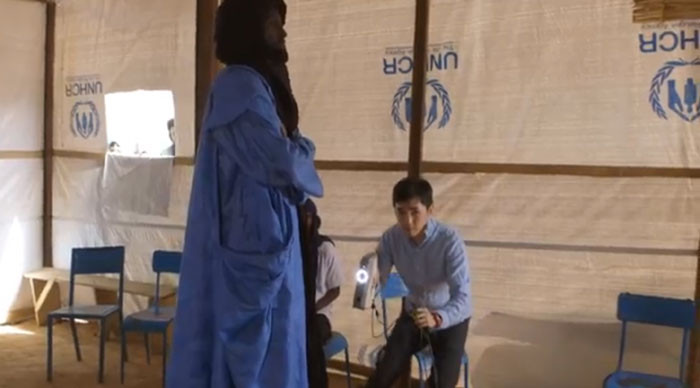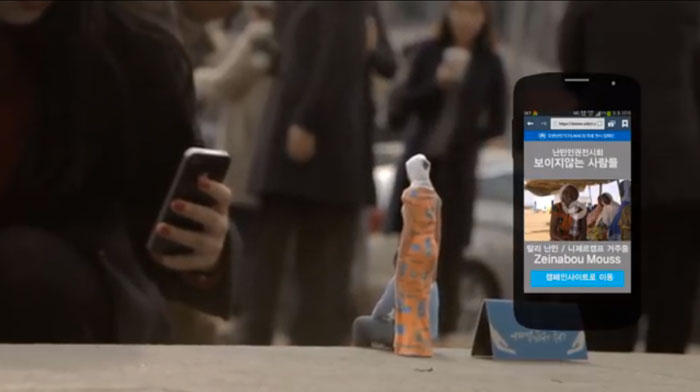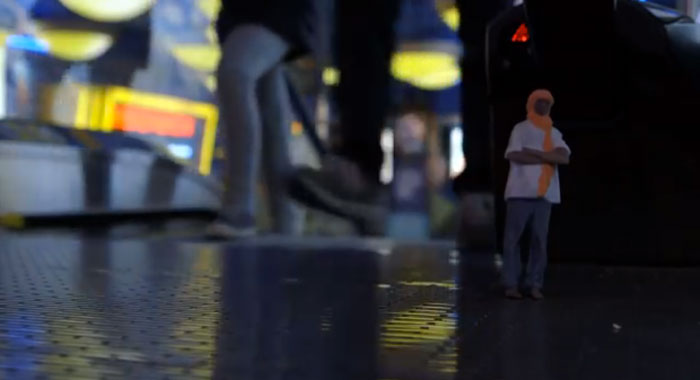The UN Refugee Agency (UNHCR) estimated that, at the end of 2012, there were about 45.2 million forcibly displaced people worldwide with 15.4 million classified as refugees and fitting the following definition: “[A]ny person who: owing to a well-founded fear of being persecuted for reasons of race, religion, nationality, membership of a particular social group, or political opinion, is outside the country of his nationality, and is unable to or, owing to such fear, is unwilling to avail himself of the protection of that country.” And, while that number is so huge, refugees in many countries often maintain a neglected status and their plight remains unseen by the public in which they’re immersed. To raise awareness of the unique situation of refugees in South Korea, the UNHCR has employed a unique technology.
UNHCR, Cheil Worldwide and the Seoul Museum of Art have used 3D printing to bring attention to the lives of refugees in Niger and South Korea in an art exhibition titled “Invisible People”. After scanning and interviewing their subjects over the past two months, about a dozen figurines were 3D printed and placed in occluded locations — windowsills, stairways and bookshelves, etc. — throughout the Seoul Museum of Art. Museum patrons have the opportunity to connect their mobile phones to QR/NFC codes embedded in the figurines to learn more about their specific stories.
Song-ha Lee, copywriter at Cheil Worldwide and co-director of the exhibition, explained the purpose of the exhibition, “Instead of telling people about refugees in a straightforward message, we were hoping to help visitors think and understand the difficulties and needs of refugees while finding them and listening to their stories one by one.” In order to reflect the prevailing treatment towards refugees, large screens were also displayed at the museum, portraying patrons passing by the figurines unknowingly in real time.
The UNHCR points out that South Korea signed “the 1951 Refugee Convention in 1992 and recognized its first refugee in 2001”, with more than 6,600 refugees seeking asylum in the country from places like Pakistan, Syria and Myanmar by the end of 2013. So far, about 370 have been officially recognized as refugees by the Korean government. Choto Chakma, a refugee from Bangladesh who emigrated to Korea in 2007 describes the difficulty of making it in her home, “I would like to be seen and heard by the people. It is not pity that I want. I just hope to be a part of Korean society in some way.” Meanwhile, in Niger, a refugee from Mali named Ouda Ag Mohamad, told the UNHCR and Cheil Worldwide crew that he wished that people around the world would “never have to leave their homes and become refugees“, adding, “I hope you can live in dignity and security throughout your life. I also hope peace will be restored in my country as soon as possible so that I can return home.”
The UNHCR’s representative in Seoul, Dirk Hebecker, hoped that their project would spread knowledge of the plight of the world’s refugees, reminding people that “refugees leave their homes and family not because they want to, but because they have to.” The “Invisible People” exhibition, running until March 2, will do its best to make refugees and their stories more visible. To learn more about the exhibit, watch the video below:
Source: UNHCR





